
Linda Lach
Apple Core
Project Info
- 💙 Gallery of Modern Art in Opole (PL)
- 💚 Łukasz Kropiowski
- 🖤 Linda Lach
- 💜 Łukasz Kropiowski
- 💛 Maciej Węgrzyn
Share on
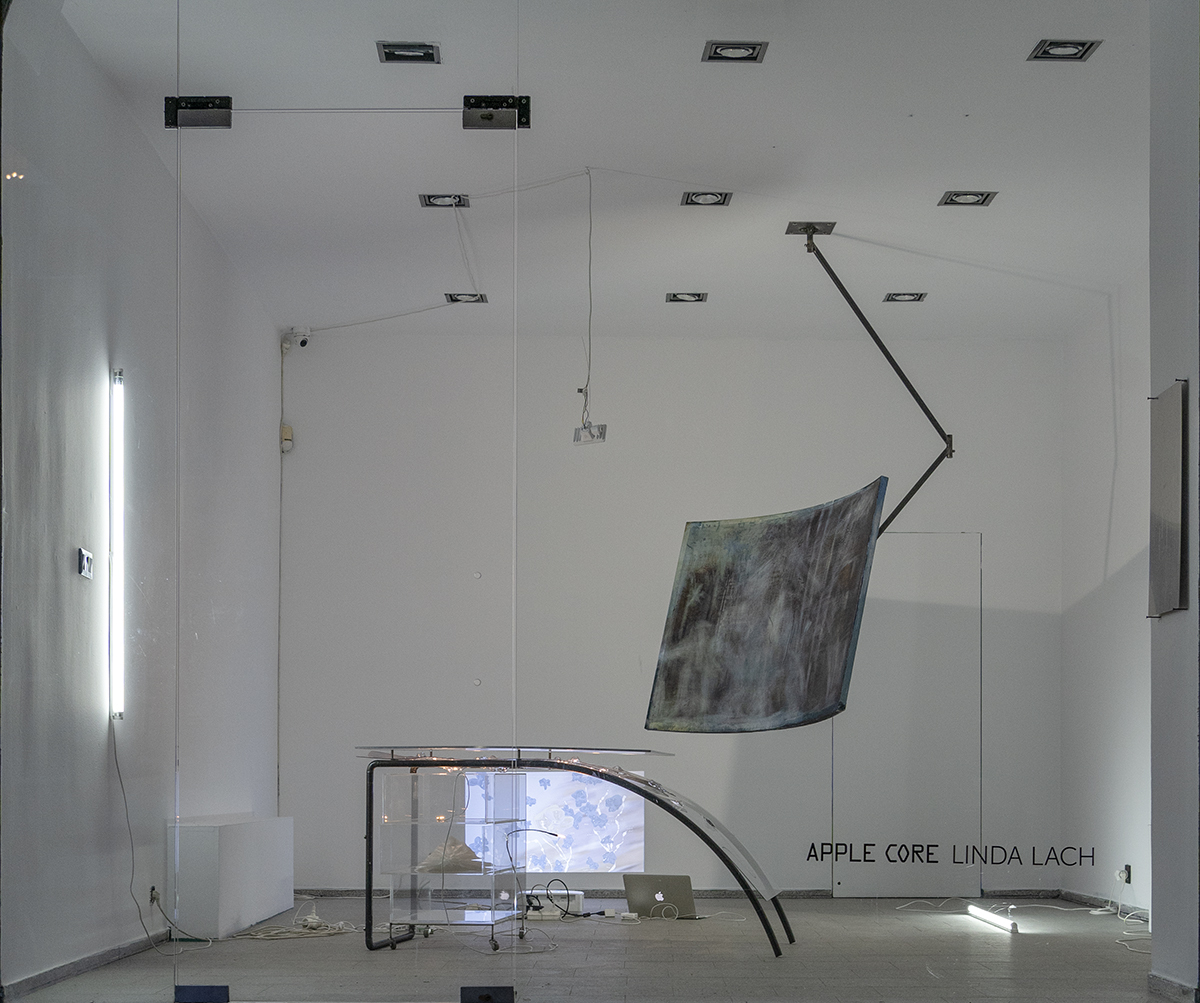
Linda Lach, Apple Core, exhibition view, 2023.
Advertisement

Linda Lach, Apple Core, exhibition view, 2023.
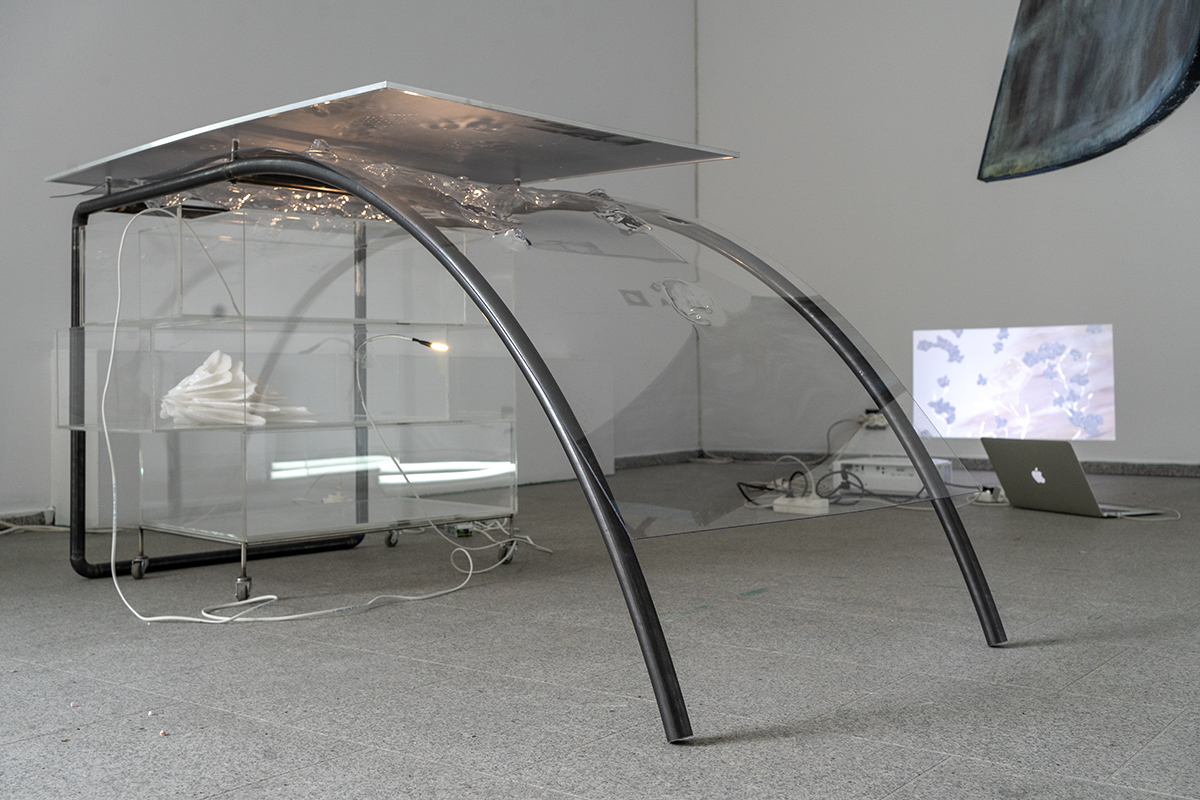
Linda Lach, Desk 01, plexiglass and metal, 70 x 130 x 70 cm, 2023.

Linda Lach, Desk 01/ Drawer module, plexiglass and 3D print, 65 x 40 x 65 cm, 2023.

Linda Lach, Desk 01 - detail, plexiglass and metal, 70 x 130 x 70 cm, 2023.
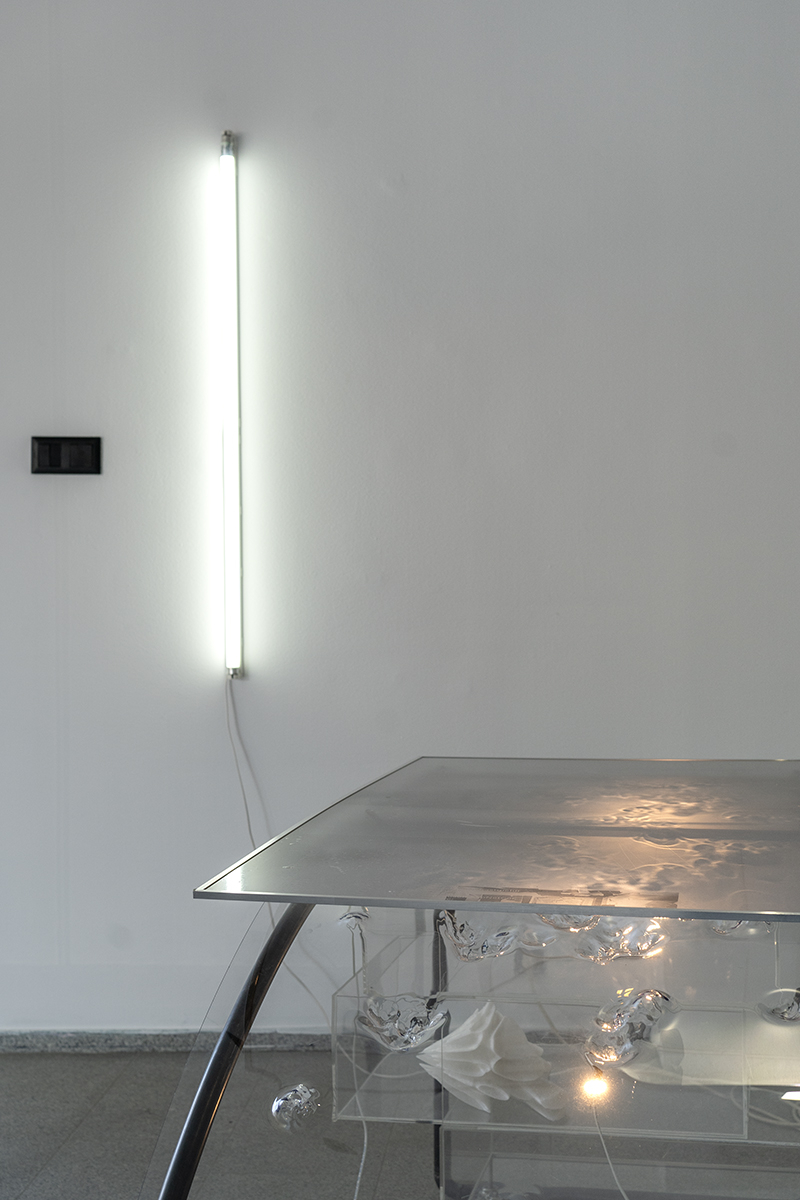
Linda Lach, Apple Core, exhibition view, 2023.

Linda Lach, Desk 01 - detail, plexiglass and metal, 70 x 130 x 70 cm, 2023.
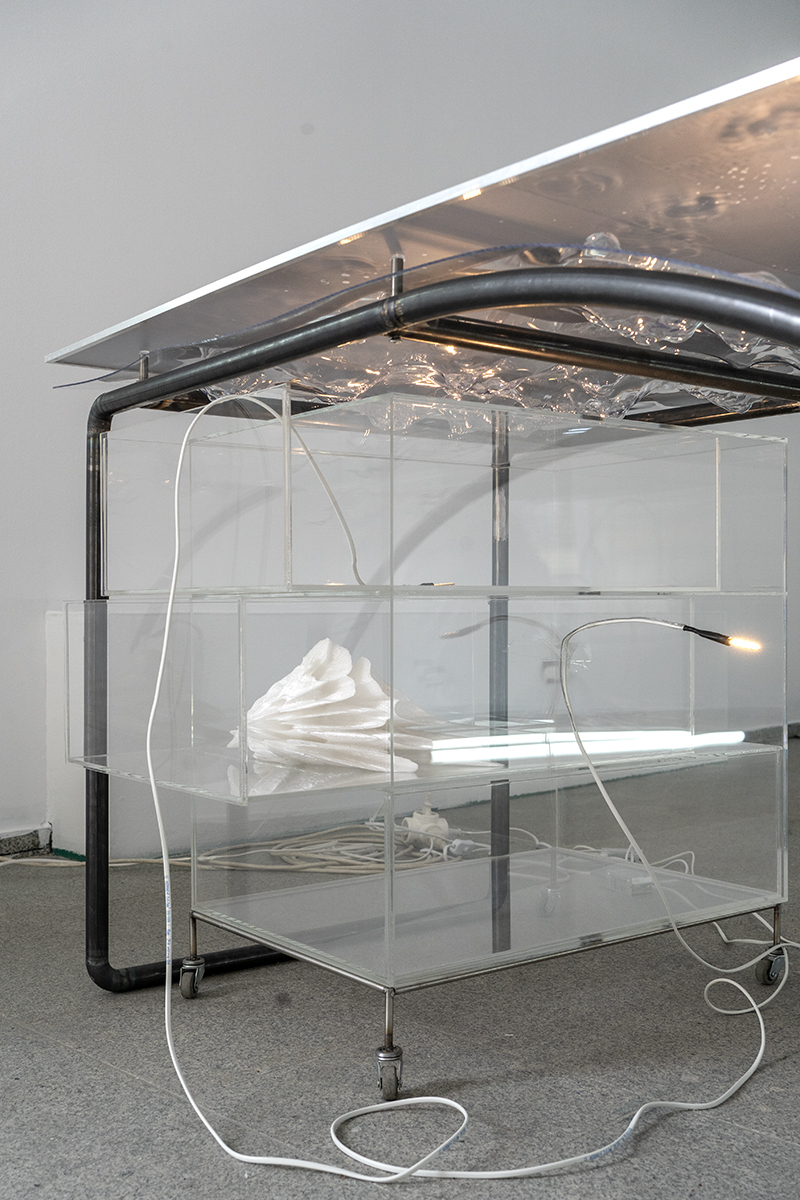
Linda Lach, Desk 01/ Drawer module, plexiglass and 3D print, 65 x 40 x 65 cm, 2023.
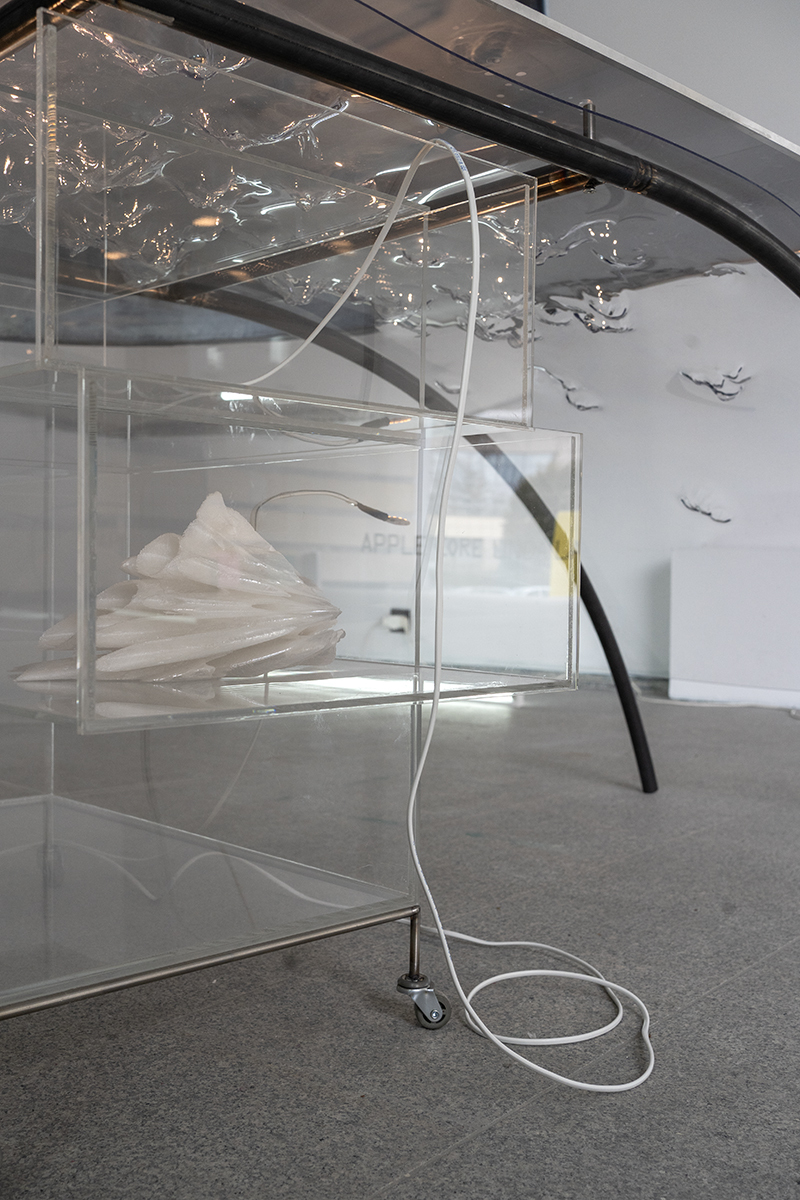
Linda Lach, Desk 01 - detail, plexiglass and metal, 70 x 130 x 70 cm, 2023.

Linda Lach, Instruction, metal sheet, 35 x 70 cm.
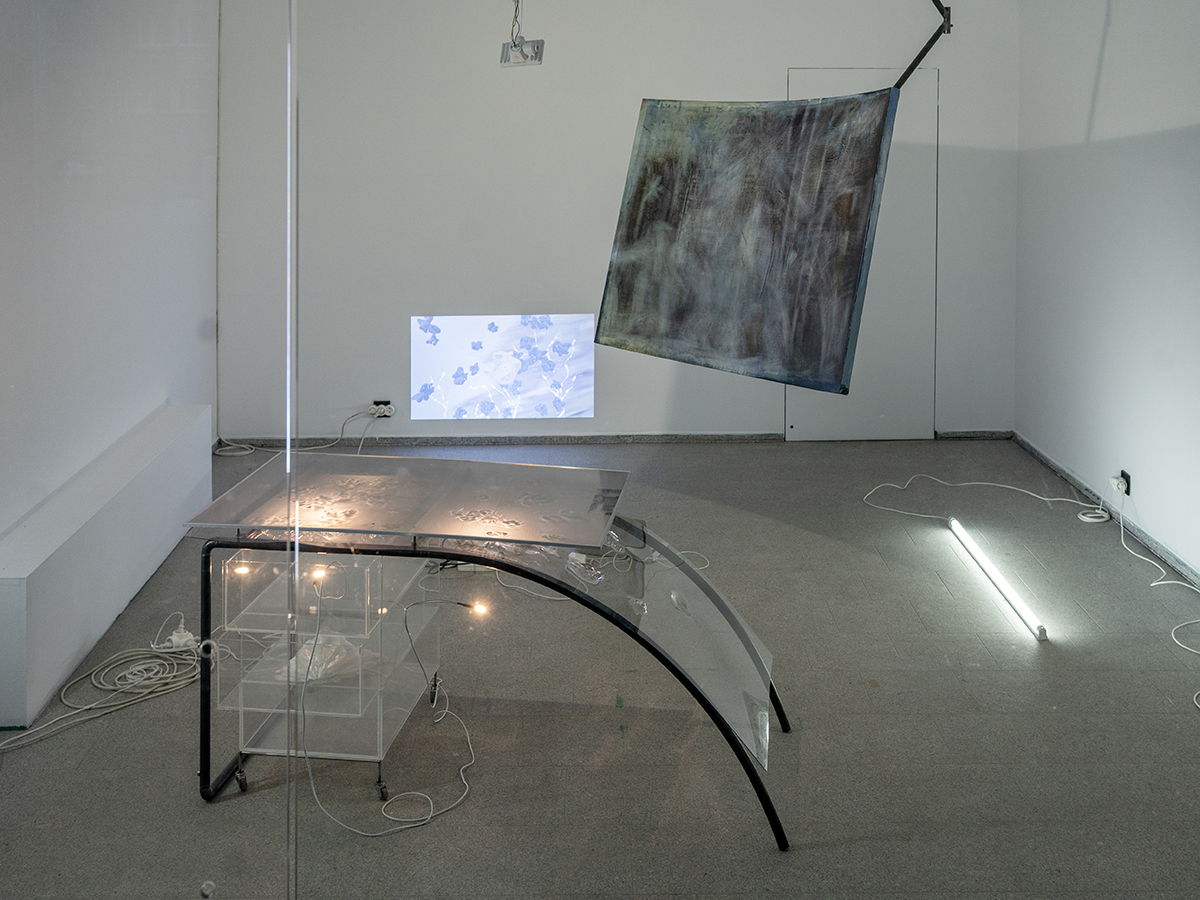
Linda Lach, Apple Core, exhibition view, 2023.

Linda Lach, Apple Core, exhibition view, 2023.
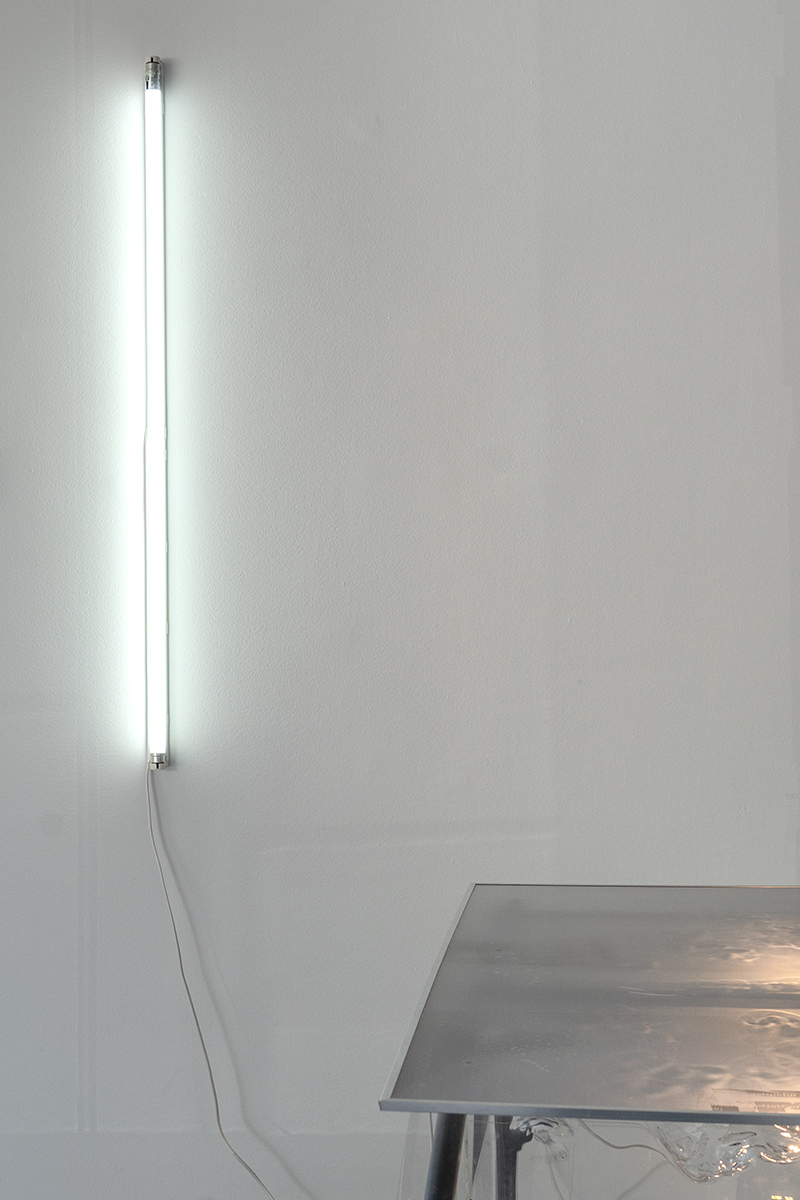
Linda Lach, Desk 01 - detail, plexiglass and metal, 70 x 130 x 70 cm, 2023.
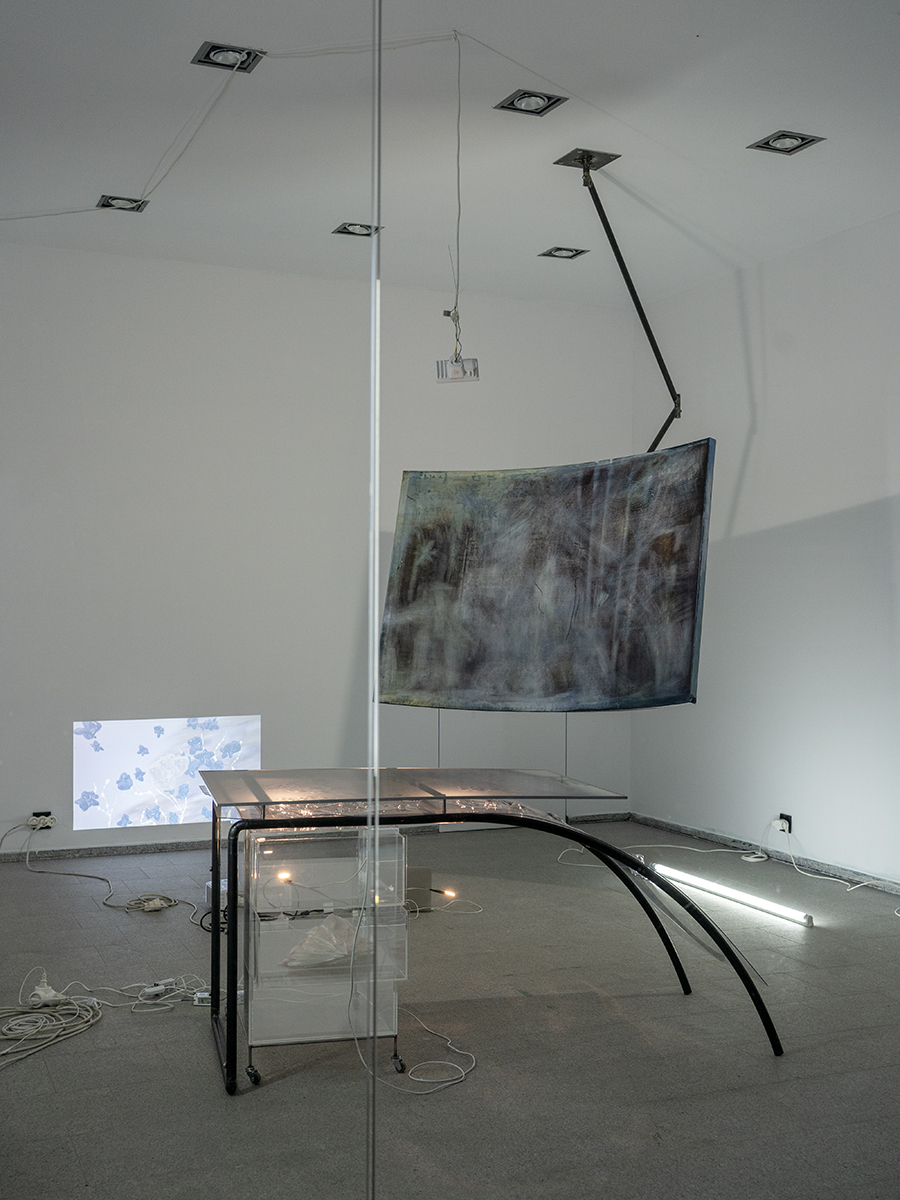
Linda Lach, Desk 01 + WUNDERKID, mixed media, 2023
What is the work Trans-line, another instalment of which can be seen at the exhibition Apple core, at the Gallery of Contemporary Art in Opole? Reading interviews with its author, Linda Lach, we find a rather complex answer to this question :
"A programme called Trans-line counts the probability of swapping lives with another person. Life is defined here by 21 areas relevant to human existence, such as interpersonal relationships, place of residence, appearance, childhood traumas [...]. Once the participants have completed the test, the programme creates their digital counterparts, which look like 21-angle blobs. It then places them in a database. We can select users from it with whom we would like to swap some sphere of life [...]'.
Trans-line is also a project that:
- 'makes it possible to think of ourselves in an ideal way, without what bothers us or what doesn't suit us about ourselves,
- tries to answer the question: what would happen if I were someone else?
- it shows a database - the database will be public, it will be possible to see all the answers collected. The main aim is to store the data and show it as the equivalent of the result, the ultimate replacement,
- is a thought experiment, referring in its assumptions to those of pataphysics, which was an alternative form of science that did not aim to achieve tangible results and mainly consisted of doing science in a formal way through conventions, conventions or publishing articles.
On first contact with the work, the undoubted contradictions are striking. On the one hand, the programme uses the language of science - a specific data acquisition system, a code generating a digital equivalent of a participant, probability calculus or diagrams presenting decision paths... On the other hand, the project relies heavily on the emotions, dreams of the participants and creates a certain situation, yes, potential, but in fact impossible. Any contradictions, however, cease to matter the moment we realise that Trans-line is a pataphysical object. It annexes scientific methodology for its own purposes - to create conditions suitable for carrying out a certain act of thought relating to the different, the exceptional, the additional, the unnecessary or even the unreal (but thinkable, so alternatively existing in the realm of the intellect). Pataphysics is interested in all questions and all answers to them (not only those that are pertinent or have some specific application). Difference is here not only an attribute, but also an authentic substance, a reality itself, hidden under infinitely variable forms. Difference explains everything, because everything is its manifestation: sound, light, movement, life, thought. It is the differences that we imagine as forces and as meanings. For 'Pataphysics, the two are a unity. The universe is made up of differences and extends as far as we are capable of seeing them. It has an infinitely divisible structure, the structure of thought.
The potential for infinite divisibility and differentiation is also present in Linda Lach's objects and installations. The artist is interested in the possibility of unlimited assignment of meanings and uses to objects, and their transformation to the point of obliterating their primary function. This parallel coexistence of multiple solutions and an inexhaustible number of options, which should not be valued in terms of utility, is also a typical pataphysical phenomenon. Raymond Queneau - one of the notables of the College of 'Pataphysics - is the author of an experiment that says much about the search for pataphysics. In his book Stylistic Exercises, he depicted the same minor and mundane incident occurring on a public transport bus in different ways (modifying perspective, style and rhetorical tricks). The result is 99 different stories. Similarly, Linda Lach's works are variations on the same theme - but becoming something different each time. It turns out that playing with repetition (or even algorithmisation and standardisation) subjected to chance, speculation and the machinations of the imagination leads to kaleidoscopic forms of variation.
'I draw diagrams or decision trees about my life,' says the artist, 'where I will go or what I will do that day. It's a kind of practised meditation and this has a visual representation in the form of a diagram. However, it's not really about the diagram itself, but about how I felt when I created it. [The mathematics is the code behind which I hide. Despite the biological notion of a target morphology - a pattern towards which the system will evolve or regenerate after disruption - life is not experienced as stable; rather, existence is experienced as capricious and full of uncertainty and change - often not fitting into the framework of our desired order or fulfilling our expectations. A living organism is far from a state of equilibrium, if only because it is condemned to constant change in the process of exchanging energy, matter and information with its environment. Creating images of life through a digital code, even if they are 21-angled blobs, paradoxically provides at least a substitute for mathematical harmony and precision in the description of this shape-shifting element that escapes our control.
However, going further - towards the future - and shifting the focus from biological optics to digital optics, which is becoming an increasingly real reality in our lives, one can see that the artist's work is gaining a new dimension: perhaps humanity is on the threshold of a transition to cybernetic space - a virtual world in which, theoretically, the possibilities are almost pataphysically unlimited. It is hard to resist the impression that Linda Lach views her artistic practice in a similar way to Queneau, who affectionately described pataphysicians engaged in literary activity: rats building a labyrinth from which they plan to escape.
Łukasz Kropiowski




